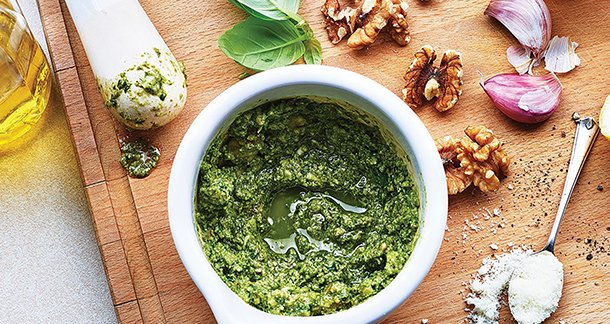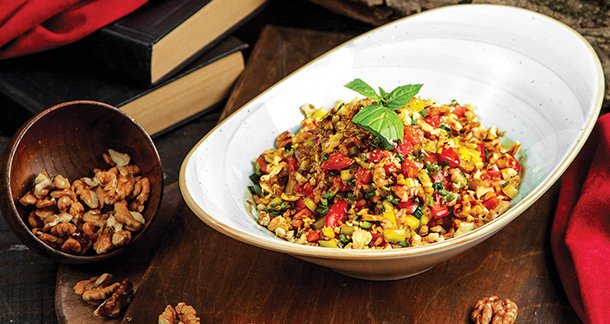The culinary landscape in India is changing, with increased attention being drawn to health, nutrition, and innovation. Among the many ingredients gaining the spotlight, walnuts have emerged as a staple in kitchens across the country. Where once they occupied a niche, they have now staked a claim based on their unparalleled nutrition, as well as on their remarkable versatility.
The Expanding Walnut Market in India
The market of Indian walnut has grown tremendously in the past few years. Market reports reveal that this sector is expected to touch USD 459 million by 2033, at a steady compound annual growth rate (CAGR) of 5.5% per annum between 2025 and 2033. This growth can be attributed to improving consumer understanding around healthy eating, the gradual shift to plant based diets, and growing use of walnuts in cooking. The market is bound to grow further as chefs and food enthusiasts try more innovative ways to use walnuts.
Nutritional Powerhouse: The Health Benefits of Walnuts
Due to their abundant nutritional qualities, walnuts are often hailed as a superfood. They are an excellent source of omega-3 fatty acids, with half an ounce containing as much as 2.5 grams, the amount recommended by the U.S. Food and Drug Administration and the World Health Organization as a daily ideal for heart and brain health—alongside a top-notch trove of proteins, fibers, and antioxidants. With their anti-inflammatory properties and a presence in many wholesome, gluten-free dishes, walnuts contribute to a balanced and nutritious culinary experience.
A Versatile Ingredient in Indian Cuisine
The remarkable versatility of walnuts is one of the key reasons for their burgeoning popularity. They easily become part of different kinds of dishes, whether they are traditional or modern. From crunchy toppings for salads to rich, buttery bases for desserts, walnuts elevate the flavor and texture of numerous preparations.

Traditional and Contemporary Applications
Traditional Uses:
Walnuts have been part of the Indian diet for centuries, more so in certain parts such as Kashmir where it is a staple. One of the famous dishes from the region is the Kashmiri walnut chutney which combines walnuts, yogurt, and spices. It is greatly relished with breads and rice. Walnuts also find a place in some of the pickles and sweets where they enhance the old recipes.
Modern Innovations:
Contemporary Indian chefs have started using walnuts in an innovative manner and are making dishes with traditional ingredients with global influences. Some interesting uses are:
- Curries with Nuts: A more unique take on curries, grounded walnuts are used as a thickening agent, as in the case of the walnut and spinach curry.
- Walnut Pesto: A delightful twist on traditional basil pesto, it is created with walnuts, fresh garlic, olive oil, and dairy free gourmet cheese.
- Walnut-Crusted Proteins: A crust made of walnuts adds crunching flavor whether it is fish or tofu.
- Walnut Chutneys and Dips: Spicy, tangy walnut and tamarind chutneys are great with snacks and appetizers.
- Walnut Desserts: From walnut halwa to date-and-walnut laddoos, Indian sweets are becoming even more healthy and delicious.
- Walnut Milk: Popular among health enthusiasts who are moving towards a dairy free lifestyle, walnut milk is perfect for smoothies and coffee.
- Walnut and Millet Salad: This delicious and nutritious salad is made of toasted walnuts, millet, and fresh vegetables.
- Walnut-Infused Breads: Sourdough and gluten free walnut enriched bread are being made for the health conscious market.

The Influence of California Walnuts
An important influence on the Indian walnut market is the growing presence of California walnuts. Regarded as the finest in the world, there are extremely popular Indian chefs and home cooks who admire these walnuts due to their smooth and rich buttery essence. The Chandler variety, which is particularly well-suited for the Indian palate, has become the go-to walnut for many culinary applications.
The Emergence of Walnut Oil in Cooking
The other fascinating trend is walnut oil being rapidly adopted in Indian kitchens. Its nutty scent and excellent nutritional value make it perfect for dressings, marinades, and other finishing touches for dishes. Drizzling it on roasted vegetables or pasta not only makes the food more delicious but also adds healthy fat to the meal. With more knowledge and information regarding walnut oil, it is gradually becoming a standard ingredient in the gourmet kitchen and is expected to be used more frequently in the near future.

Expanding Market Opportunities
Growth of the walnut industry is promising, offering new exciting prospects for chefs, food business owners, and the general health-conscious consumers. While artisanal bakeries are adding walnuts to their breads and pastries, gourmet walnut-based dishes are becoming popular in fine-dining restaurants. As more people seek nutrient-dense foods, walnuts are poised to become a mainstream ingredient across multiple culinary sectors.
The growing popularity of walnuts in Indian cuisine is indicative of a shift toward health-focused and ingredient-based cooking. Their diverse nutritional benefits, diverse applications, and growing market presence make them an invaluable addition to both traditional and contemporary dishes. Be it a savory curry, delicious dessert, or a healthy salad, walnuts have earned a rightful place in Indian kitchens, adding a unique flavor along with tremendous nutritional value to the meals.



